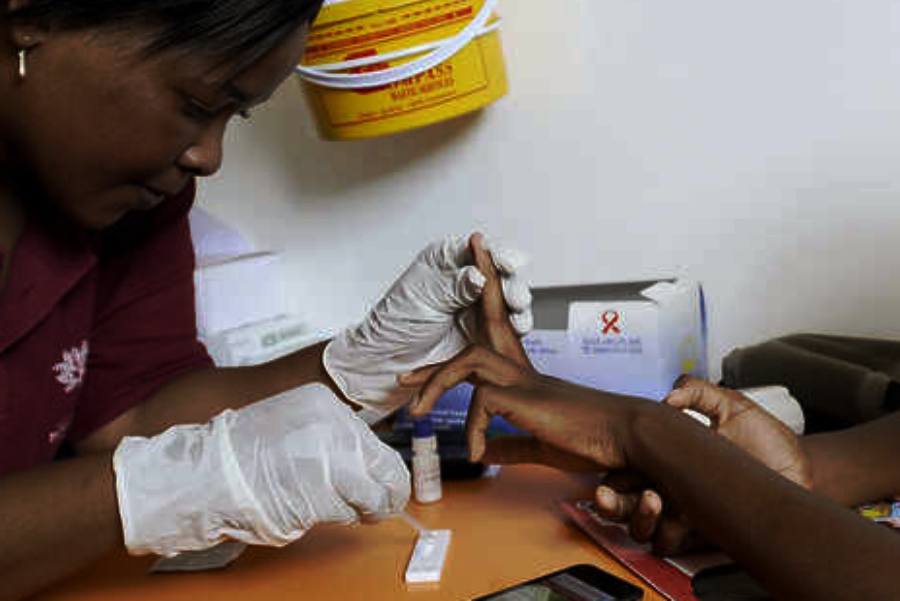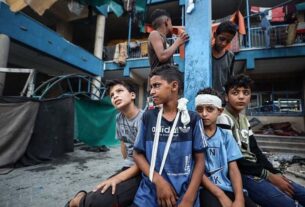Thu 25 July 2024:
HIV prevalence in South Africa across all ages decreased from 14% in 2017 to 12.7% in 2022, resulting in a decline from 7.9 million (2017) to 7.8 million (2022) people living with the virus.
This is based on the findings of the sixth South African HIV Prevalence, Incidence, and Behaviour Survey (SABSSM VI), which was released by the Human Sciences Research Council (HSRC) at the 2024 International AIDS Conference on Wednesday.
While HIV prevalence has decreased across all age groups, data shows that females continue to be disproportionately affected by HIV, with a prevalence of 16.4%, compared to males at 8.8% across all age groups.
__________________________________________________________________________

https://whatsapp.com/channel/0029VaAtNxX8fewmiFmN7N22
__________________________________________________________________________
Prevalence peaks at 34.2% for females aged 35 to 39 years, whereas prevalence peaks at 27.1% for males aged 45 to 49 years.
The survey also found that HIV incidence in individuals aged two years and older in 2022 was 0.44%, resulting in 232 400 new HIV infections in South Africa.
HIV incidence was at 0.60% among adults 15 years and older translating to 227 400, 0.39% among youth and young adults aged 15 to 24, and 0.72% among adults aged 15 to 49 years.
In addition, the HIV incidence rate in 2022 was consistently higher in females than males in all age categories.
“In terms of treatment, South Africa recorded an increase in antiretroviral treatment (ART) coverage, from 63.7% in 2017 to 80.9% in 2022,” the HSRC said.
This means an estimated 5 700 000 people living with HIV receive ART, an increase from 4 500 000 in 2017.
“A greater proportion of females, 83.2% than males, 76.2% were on ART.”
Data shows that HIV viral load suppression stands at 81.4% for all ages.
Evaluating progress
The SABSSM VI survey, conducted between 2022 and 2023, evaluates the progress of the South African national HIV and AIDS, STI, and TB Strategic Plan.
It also monitors HIV indicators for national and international reporting.
The survey also assessed progress towards the 2030 UNAIDS 95-95-95 targets, HIV drug resistance, and the relationship between social and behavioural factors, intimate partner violence, and HIV infection.
In December 2020, the Joint United Nations Programme on HIV/AIDS (UNAIDS) outlined a set of new targets ensuring that 95% of all individuals living with HIV are aware of their HIV status, 95% of all individuals diagnosed with HIV infection receive continuous treatment, and 95% of all those on treatment achieve viral suppression by 2025.
The HSRC said progress towards the 95-95-95 targets improved, with 89.6% of people living with HIV knowing their status, and of those knowing their status, 90.7% were on treatment, with 93.9% of those who knew their status and being on treatment, being virally suppressed.
“Improvement across the 95-95-95 indicators was more pronounced in males compared to females.”
Overall, the survey found that 81.4% of all people living with HIV were virally suppressed.
“However, it is concerning that the survey further reveals that gaps remain in knowledge of HIV status among youth aged 15 to 24 (73.1%). Early sexual debut, age-disparate relationships, multiple sexual partners, and low condom use persist as key drivers of HIV.”
According to the findings, the awareness and uptake of pre-exposure prophylaxis (PrEP) are increasing.
Stigma
Overall principal investigator of the study, Professor Khangelani Zuma, stated that HIV-related stigma persists as a significant issue among individuals aged 15 years and older.
“Addressing stigma is essential to improving the quality of life and well-being of people living with HIV. However, of the six questions related to HIV-related stigma, the majority yielded results that indicated that most people held positive attitudes toward people living with HIV,” said Zuma.
Response rate
The survey achieved a household response rate of 80% and an individual interview response rate of 94.1%.
A total of 47 766 participants provided blood specimens for HIV testing, resulting in a testing response rate of 62.7%.
The professor said this indicates that the results suggest advancements in the fight against the HIV epidemic in South Africa.
“This is evidenced by a stabilisation of HIV prevalence, ageing epidemic, a reduction in HIV incidence, enhancements in HIV treatment outcomes such as increased rates of ART coverage and viral load suppression (VLS) in line with the 95-95-95 targets,” he added.
The study has since recommended key actions that can address the HIV epidemic as a public health threat in South Africa by 2030.
These include continuing intensive programmes focusing on reducing new infections among adolescent girls and young women.
It also proposed enhancement of prevention efforts that target groups disproportionately affected by the drivers of HIV infection such as women and young people.
– SAnews.gov.za
______________________________________________________________
FOLLOW INDEPENDENT PRESS:
WhatsApp CHANNEL
https://whatsapp.com/channel/0029VaAtNxX8fewmiFmN7N22
![]()
TWITTER (CLICK HERE)
https://twitter.com/IpIndependent
FACEBOOK (CLICK HERE)
https://web.facebook.com/ipindependent
YOUTUBE (CLICK HERE)
https://www.youtube.com/@ipindependent
Think your friends would be interested? Share this story!





